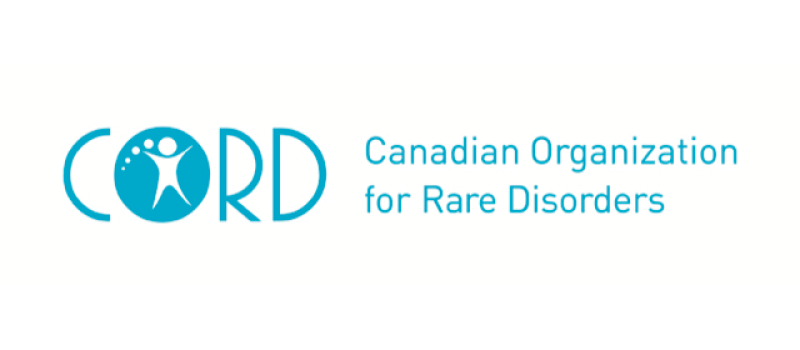CORD 2023 – rare disease day 2023
CORD 2023 – rare disease day 2023 (28 & 29 March)
Report CORD – rare disease day 2023

Overall, the tone of this meeting was very positive. One of the major discussions of last November’s meeting was about when the Canadian Federal Government was going to announce the Rare Disease Strategy they had been promising since 2019. A week before this conference the beginning stages of a Rare Disease Drug Strategy was announced along with funding this shaped the conference around the possibilities of this funding and future stages. The key focus was on pharmaceuticals in Canada for rare diseases and how to get them to the people that need them.
Day 1 Recap
The conference started with an acknowledgment by CORD about the announcement made a week earlier about the National Strategy for Drugs for Rare Diseases by the Canadian Federal Government. This is a starting point for Canada to build a network and strategy for Canada to have Orphan Drug laws and strategic care for people with rare diseases.
Health Canada started the conference by discussing how the new deal will work, namely the bilateral agreements with provinces, territories, and First Nations. There are four main goals.
- To help provinces and territories (P&Ts) create a common set of new and existing drugs that will be available for all Canadians.
- To implement an advisory group comprising patients, pharma, and health plans to advise on patient support.
- To improve data on patients and rare diseases in Canada and improve accessibility.
- To advance research for tracking rare diseases and following rare drugs.
This is only the first 3 years of the plan and it will focus on drugs and accessibility to them. Health Canada acknowledged “We have heard the urgency and we still don’t have all the answers … but there is a need to start somewhere.”
Currently in Canada, once a drug is approved by Health Canada, CADTH does a cost-benefit analysis and often based on this each drug payor (over 200 of them), private or public, decides for themselves if they will cover that drug.
In the past 20 years, there has been a major improvement in innovation for rare disease drugs getting through the pipeline. There has been a decrease in the number of hoops when patient numbers are low.
The CEO of a major children’s hospital in Canada (CHEO) then discussed the fact that one of the major challenges is in Canada our system is built to support low complexity and high patient loads, whereas rare diseases exist in a high complexity low patient load format. At CHEO 31 diseases are now screened for at birth.
The quick progress of technological innovation, data science, and medical science has led to amazing innovation which means this strategy cannot be static it has to evolve as changes continue. COVID has proven we can move fast in the medical sphere.
Canada only has about 60% of the rare disease treatments that the EU has access to and less than ½ of those are publicly funded. It takes 1300 days on average from launch to public funding.
Three key areas need to be considered here:
- How we recognize the value of new meds and tech; must be beyond cost-benefit.
- Consistent and Predictable patient access pathways.
- The use of real-world evidence rather than just studies.
There was another follow-up from the IPSO survey on patient and caregiver experience. In total 528 patients and CGs filled in the survey. Some stats that have come out are:
- 3.7 yrs to diagnosis.
- 5.9 healthcare providers to diagnosis.
- 3 wrong diagnoses on average.
- 70% at diagnosis received no counselling/support – a HUGE opportunity for patient groups here.
- Feelings on drs and information vary as well:
- Less than 10% felt pediatricians/GPs have any idea about their condition
- 30% felt specialists had some understanding
- Only 60% feel they have the information they need now
- 40% felt they were given an informative person or group
- Many felt callous dismissal by GPs:
- 60% have meds for their disease but over 1/3 cannot access meds due to cost.
- Out-of-pocket costs for care is ~$7200/yr.
- People do move P&Ts for care.
- 80% of patients want Rare Disease Centres a focus for the Federal Gov.
- 84% support federal oversight.
Now is the time to bring everything together and Rare Disease Centres are likely the best options.
A specialist on Rare Bone Diseases spoke next, highlighting the focus on care, not just drugs. Also, a major struggle is where to send patients after 18 yrs old in Canada. Patient registries must also be a focus to match clinicians and patients.
Additionally, there need to be parallel pathways to support Indigenous communities in Canada as right now there are major discrepancies in outcomes from Indigenous vs non-Indigenous patients.
One major restriction in data is that counts under 5% are suppressed for privacy and this encapsulates most rare diseases, patient permissions may be the answer here.
The federal government has decided it will not define rare instead, the focus will be on what they can change and move for now which is drugs.
There has been a promise that despite this being called the Drugs for rare Disease strategy the investment will be broader we will have to wait and see. Health Canada made clear “no amount of money in the world will cover everyone so for now it needs to start with value-based investment.”
There needs to be a focus on moving knowledge with the patient rather than getting the patient to information elsewhere. Must include complexity and knowledge of disease and person for drs rather than old-school models. Moving patients to centres – could it work in Canada? It does work in Western Australia.
COVID has pushed virtual appointments forward and the rare disease community can take advantage of that, and this may be where the importance of listening to patients and patients’ outcomes is so critical.
Patient stories highlight situations where medication is available in Alberta and Quebec but not in Saskatchewan or BC, and only after 2 failed surgeries in Ontario. These sorts of stories are a major focus of ending with the Drug Strategy.
Also, Care is not a Cure all experiences need improvement and focus. It is also very important that a new strategy does not attempt to become one size fits all rare diseases.
Cystic Fibrosis already has a very interesting set-up for centres of care in Canada with drs, nurses, pharmacists, physios, and dieticians all working together for patients.
Still need more research to pull the practical and scientific paths together to improve these centres.
CORD acknowledges that it’s up to patients and CORD to ensure that the Feds don’t limit this to simply about drugs but that the government holds up the plan for this to be a broader strategy.
Canada can use the EU’s success in using registries but also other nations’ success with using Real World Data. Canadian payors are willing to try outcome-based drug covering goals but often default back to financial-based as it’s easier.
Here we had government officials get into very specific discussions about how payors and manufacturers could make various agreements to further specific drugs.
Day one ended with case study panels where patients got to share their successes and challenges with accessing drugs and payors, governments, and manufacturers got to talk about solutions and opportunities. The overall emphasis of these discussions was to highlight that there are opportunities such as trials and political pressure but should this be the work of patients to get life-saving treatments? Politicians shouldn’t be choosing winners and losers in this realm. Also, the Postal Code Lottery needs to end – where it depends on where you live, what care you get.
Day 2 Recap
The day launched with Member of Parliament Adam van Koeverden talking to the conference about the importance of rare disease research and the federal government’s role in it. He also mentioned specific keys to talking with government leaders – highlight commonalities 1/12 Canadians have a rare disease, and give specific goals.
The next talk was on SPiN Social Pharma Innovation, a similar talk was held at the November CORD conference discussing the opportunities SPiN brings to new drugs. Especially since Canada currently only has 1 Canada-wide agreement regarding drug therapy for every individual who needs it. Most are run by individual P&Ts. A new national strategy could help improve this access. Developing a clinical network should be the next goal to help further the goal of reaching more patients.
National Research Council then got to discuss their current 6 major projects:
- 2 clinical developments of cell therapy.
- 4 novel tools and platforms.
Genome Canada got to follow up on their last presentation in November where the focus had been on genetic diagnosis now, they are starting to look into some genetic functions for treatments. The All-for-One project is continuing this rare disease research.
Access to genetic counsellors is faced with many inequalities across Canada.
MICYRN then discussed possible models patients’ care could take: site-based model, cluster models, or hybrid. Overall, the consensus was that the hybrid model is preferred but there needs to be a National Registry for Rare Diseases. Online platforms for research, dr appointments, and pharmacists developed for COVID must be kept especially in rare disease areas.
Overall, all the panellists were very clear that not only do you have to solve the separation of P&T’s care but the internal divisions also need to be closed.
Right now the wait time from GP to genetic counselling is about 400 days, the new proposed model the goal is to drop this to 90 days with Rare Disease Centres.
The last half of day 2 was focused on Critical Success Factors and how to improve research on rare diseases.
The first major topic was the importance of creating a Patient Data Platform for patients by patients. The key objectives are:
- Integrate data from multi-stakeholders.
- Expedite diagnosis and treatment.
- Enable value-based agreements.
- Improve research on rare disease.
Challenges include: stakeholder collaboration, expertise, technology, data privacy/security, and regulatory navigation.
Currently, patient registries exist in each of the 13 P&Ts or even worse every hospital in each P&T.
A nationwide registry can improve: education resources, timely referrals, access to clinical trials, improve accurate diagnosis/treatment, and connect rare patient groups to patients.
The next presentation was based on the Economies of Drugs for Rare Diseases, this specifically focussed on the Canadian method of using CADTH/INESS. This was a very data-heavy and Canada-specific talk but the consensus was that having a cost-benefit analysis for every rare disease drug based on the quality-of-life improvement years of a patient’s life results in many nonsensical numbers. Pharmaceuticals that benefit many are obviously what this system is designed for and rare disease drugs seem to break the system leading to many payors not covering them for patients.
A good example is that based on QALYs (Quality Adjusted Life Years) a metric CADTH uses for most rare disease cost about $1,000,000/QALY whereas a new diabetic drug costs about $55,000/QALY. Further, CADTH only considers a cost-benefit a positive if the cost is below $50,000/QALY.
The last presentation was a discussion about the possible future of the All for One Health Data Ecosystem. This network would allow drs to enter a patient into a data registry that then allows clinicians and researchers to search it and find patients for potential trials and treatments. This would also allow a patient to remain visible in the system even if the current moment doesn’t work for the patient they don’t lose their connection forever to research opportunities.
The conference ended with CORD’s goals for 2023:
Specific
- 10 designated centres of expertise for rare diseases (or a rare disease).
- 5 agreements with P&T using RD money announced last week.
- 1-3 best therapies/areas solved through alternate agrees.
General
- Improve fast funding of drugs.
- Mobilize Rare Across Canada.
- Keep patients at the centre of everything.
Thanks to Katie Allen (Patient Advocate Canada).









